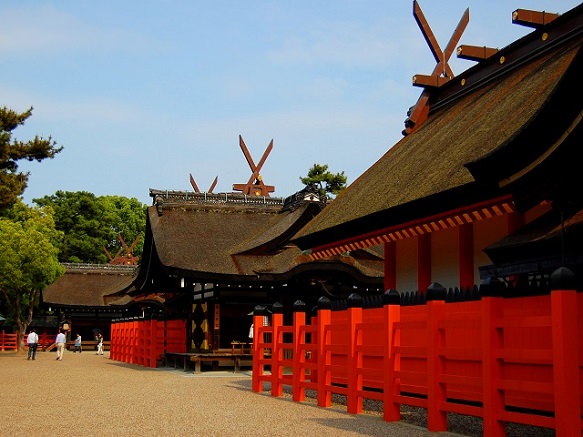-
- USA/Canada 1-800-285-2726
- Australia (02) 8006 4411

Sumiyoshi Taisha, also known as Sumiyoshi Grand Taisha, is one of Japan's oldest shrines. It was founded by Tamomi no Sukuna in the year 211 and is the main Sumiyoshi shrine over 2,000 other Sumiyoshi shrines in Japan. The shrines name stems from the unique structure known as Sumiyoshi-zukuri which can be seen in other shrines as well. This unique style is said to be free of influence from the Asian Mainland and is one of three shrines to be considered purely Japanese
The shrine's architecture consists of straight roofs and horizontal billets, opposed to the more common curved roofs. The Sumiyoshi-zukuri style also has a fence around the entrance and are often found by the sea, as Sumiyoshi shrines enshrine the Kami (gods) that protect travelers, fishermen, and sailors.
Sumiyoshi Taisha has four main halls with three facing west, unlike the common practice of facing south during and after the Nara period. When approaching the main shrine, guests will come across the beautiful Japanese-style Sorihashi Bridge. Also known as the Taiko Bridge, this traditional bridge arches over a pond, leading to the entrance. With such unique beauty, it's no wonder Sumiyoshi Taisha is one of Japan's most visited shrines during Hatsumode (the first temple visit of the New Year).
Pray for safe travels home after your Cherry Blossom Japan Tour or Anime Japan vacation ends in Osaka at the Sumiyoshi Taisha with our extended-stay options, or customize your own tailor-made Japan tour through Osaka to include the shrine and the rest of Kansai's can't miss spots!
Food Town - Okonomiyaki, Takoyaki and more
Popular nightlife and entertainment area; iconic Glico display
Reconstructed after it was burned down by lightening; now modified into a museum
Considered one of the best aquariums in Asia
Known to be a more dangerous area of Osaka with higher homeless rates but great food
Large shopping mall specializing in anime and character goods
Popular shopping district also known as Osaka's Kitchen
Japan's oldest temple; first temple built by the state